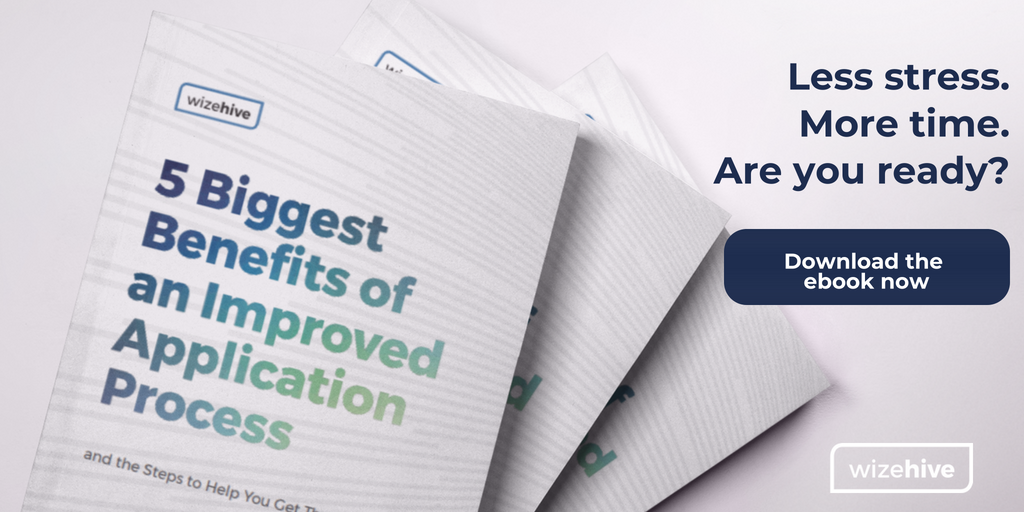As funding opportunities for scientific research dwindle, the volume of applicants for research grants has grown exponentially. How do you manage this influx without spending more on administration?
According to Boston University, “cuts in federal research funding are threatening to slow the pace of scientific progress.” They reference statistics from the American Association for the Advancement of Science (AAAS), which show that federal spending on research and development as a share of our gross domestic product has been declining since the 1970s.
While there are numerous reasons for this trend, including debates about the government’s spending priorities, lack of political knowledge about the scientific process, and lessening support by the general public, the outcome is the same for funders - increased competition for your research grants.
More than ever, making the right decision - and quickly - is a high priority.
But as your applicant list continues to grow, is it inevitable that you’ll need more staff, reviewers, or volunteers to manage the program? Fortunately, that’s not the case. We’ll share four tips to help you maintain quality and speed up the process, regardless of how many investigators are vying for your research grant.
Perform User-Testing on Your Application Form
One of the best ways to reduce the administrative burden of grant management is to make sure your application is crystal clear. You’ll avoid those millions of simple questions that distract your staff.
You might wonder why you’re even getting questions - isn’t the process obvious? But sometimes, you’re too close the program to see where confusion could arise. And let’s face it - everyone is busy, so it’s easy to miss something if the application doesn’t make it abundantly clear.
Before you put out a call for submissions, find individuals who could “test drive” your application. Ideally, these are people who have applied for research grants and are familiar with your area of study. Just emphasize that you want them to be honest, not polite!
Ask them to go through the entire process, pointing out where something is confusing or could be interpreted multiple ways. It could be related to the instructions, questions, required attachments, or their next steps. Make the changes and run through it once more.
This is a simple, proactive way to reduce the need for added administrative help.
Use a Single Platform for Grant Management
For many grant managers, the days of printed proposals are long past. However, there are new challenges to staying organized.
Instead of collating paper, you’re managing an endless cycle of emailing, uploading, saving, and downloading. You might have one software for the application form, another for saving documents, and then a constant stream of emails, texts, or instant messages between staff and reviewers. This all eats up time and increases the possibility of lost files or messages.
With a grant management system, everyone is working from the same source.
- Applicants, reviewers, and administrators have their own login, where they can see everything relevant to their role.
- There’s no need to email documents because they’re all saved in one place.
- All communications stay within the platform, from reviewer comments to applicant questions.
- Reviewers can see the application and scorecard side-by-side, making it easier to move through each evaluation.
- Administrators can see at a glance where reviewers stand on their assignments, avoiding unnecessary follow up.
- A personalized dashboard makes it simple for administrators to report on the status of the grant program.
Each of these features adds time back into your schedule. Taken together - it adds up to a lot.
Create Two Rounds of Reviews
If you’re anticipating a large number of applicants for your research grant, you might consider developing two rounds of reviews. The first is intended to eliminate obviously unsuitable proposals and the second is a more thorough review to identify the ideal recipient.
There are two ways to tighten your first round of qualification.
- Qualifying Quiz - You could create a qualifying quiz on your application form. This ensures that applicants do not proceed unless they’re truly competitive. This is also helpful to the investigators, so they don’t spend time and effort applying if it’s not a good fit.
- Staff Review - To reduce the number of applications for your reviewers, you could identify a criteria or two intended to remove lower ranking proposals. In other words, something that’s easy to see without doing an extensive evaluation.
Either of these methods will make sure you’re focusing valuable reviewer time on your most competitive applicants.
Clearly Define Your Ideal Grant Recipient
If your review criteria or scoring system is unclear, this will slow your process down. Your reviewers will take longer to evaluate, they’ll have more questions for your staff, and you might end up with too many finalists.
Prior to assigning proposals, give your reviewers as much clarity as possible so they can move quickly through their assignments.
- Define each criterion using simple, clear language (avoid jargon or acronyms)
- Use real-world examples whenever possible
- Provide a checklist of things they should look for
- Share previous grant recipients’ proposals so they can see an ideal candidate
- Decide if you want certain criterion to be weighted more heavily than others
- Meet with your grant reviewers before they begin to answer questions
- Clarify how to flag a proposal if they have a question, so it doesn’t slow them down
When you have a lot of applicants, you need to find ways to help your grant reviewers do their jobs quickly and efficiently. Improving your review criteria is the best way to do that.
--
The trend toward greater competition for research grants is likely to continue, and so funders need to be prepared for more applicants. By clarifying expectations and strategically adding technology, you can award grant funding quickly and efficiently without sacrificing quality.
